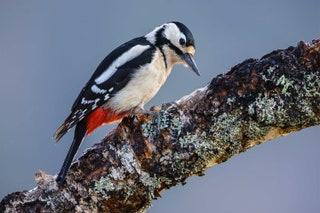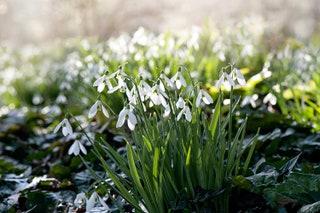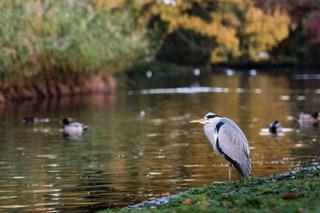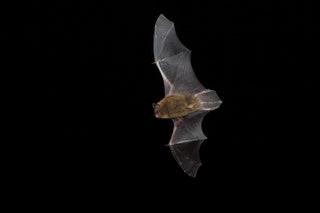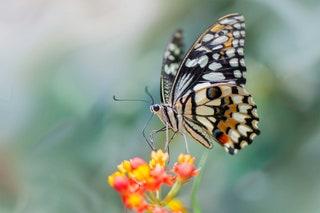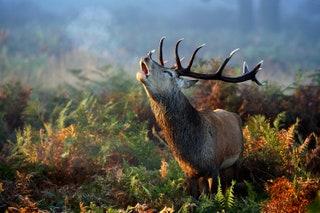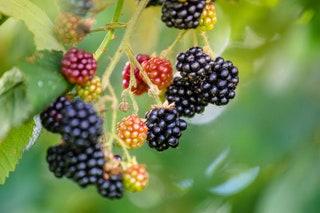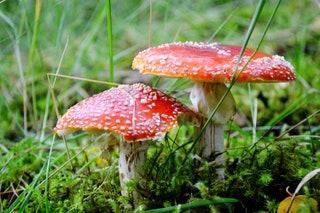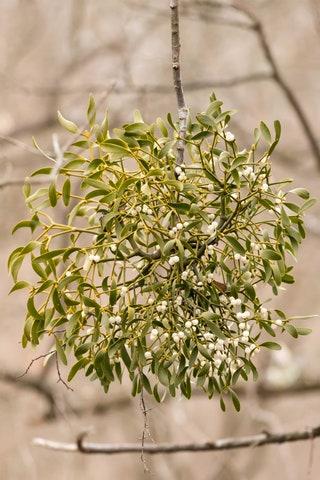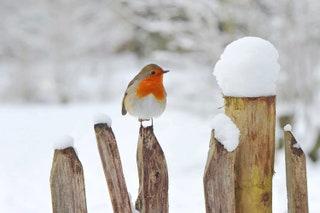Despite being a bustling metropolis, London is teeming with an abundance of wildlife. As we navigate through the concrete and steel, we often overlook the hidden gems nestled within the city's green spaces. However, when we take the time to explore, we are exposed to a captivating world of creatures, plants, and fungi that are waiting to be discovered.
To aid in your wildlife adventures, we have crafted a comprehensive guide, month by month, showcasing the magnificent array of species that call London home. This guide will equip you with knowledge on what to seek out during each season, allowing you to immerse yourself in the wonders of nature all year round.
For those seeking comfortable accommodation during their time exploring London's natural beauty, convenient options are available. To ensure a restful stay after your day trips, view site for one of the coziest hotels in Paddington, just a stone's throw away from several of London’s parks and wildlife habitats.
Discover the Woodpeckers in London this January
London's diverse wildlife includes three fascinating species of woodpeckers. While the elusive lesser spotted woodpecker might be harder to spot, you can easily catch a glimpse of the great spotted and green woodpeckers. Listen for the rhythmic drumming of the great spotted woodpecker as it hammers on tree trunks in parks, gardens, and woodlands. Did you know that these birds avoid headaches while hammering thanks to their unique spongy skull bones? Nature truly is full of clever surprises!
If you're wondering where to find these captivating creatures:
North London: Head over to Alexandra Park or Highgate Wood for excellent woodpecker-watching opportunities.
South London: Visit Sydenham Hill Wood to spot woodpeckers in their natural habitat.
East London: Explore the beautiful Victoria Park, where you can listen for the distinctive sounds of woodpeckers.
West London: Make your way to Wormwood Scrubs, another great location to observe these incredible birds.
So, why not start off your year with a nature adventure in London? Immerse yourself in the magic of woodpeckers and marvel at their extraordinary adaptations. Remember to bring your binoculars and get ready to be amazed!
FEBRUARY
SNOWDROPS
A welcome intermission to the winter gloom is the arrival of these bright delights, which look a treat when you find a blanket of them. Despite the rather delicate, drooping appearance, they’re tough little flowers – clearly, as they come to life in the depths of winter. Myddelton House Gardens in Enfield has a reputation for its gorgeous snowdrops that carpet parts of the grounds, and while Ham House in Richmond may be just outside of London by some definitions, it’s worth seeking out for the gardens, peppered with snowdrops and other winter blooms.
Where to see them
North London: Myddelton House Gardens
South London: Morden Hall Park, Nunhead Cemetery
East London: Tower Hamlets Cemetery Park
West London: Chelsea Physic Garden, Ham House
Read this for more pictures of London in bloom
MARCH: Discover the Majestic Herons of London
Witness a remarkable sight this March as London's lakeside treetops come alive with the arrival of grey heron chicks. With the eggs hatching, there's no better time to catch a glimpse of these majestic creatures in their natural habitat. These bird nurseries, also known as heronries, are home to adorable newborns amidst a backdrop of thriving wildlife.
London boasts an impressive count of around 16 heronries, each hosting a unique spectacle. Among them, the sprawling Walthamstow Reservoirs takes the lead, documenting over 100 nests in previous recordings. Regent's Park and Battersea Park are also hotspots, with 20 to 30 nests each. Here, you can observe young herons honing their flying skills, gracefully soaring over the picturesque lakes.
North London: Embark on a journey to Regent's Park, where the herons charm visitors with their natural grace.
South London: Delve into the tranquility of Battersea Park to witness the mesmerizing sight of herons taking flight.
East London: Set your sights on the expansive Walthamstow Reservoirs for an unforgettable experience amidst nature's paradise.
West London: Find solace in the breathtaking landscapes of Richmond Park and Osterley Park, both home to nature's hidden gems.
Experience the Beauty of Nature in London this April
If you're looking for a vibrant sign that winter has finally bid farewell and warmer days are ahead, keep an eye out for the mesmerizing bluebells. These delicate flowers paint the London landscape with their enchanting violet hue, but remember not to pluck them as they are protected.
London boasts several locations where you can marvel at the stunning display of bluebells, and one such place is Highgate Wood in North London. Located in the north-west corner of the forest, this woodland paradise offers an easy escape from the hustle and bustle of the city, allowing you to immerse yourself in its beauty effortlessly.
Another hidden gem for bluebell enthusiasts is Oxleas Wood in Eltham, South London. Besides its abundant violet-blue carpet of flowers, this woodland sanctuary offers a tranquil retreat away from the urban chaos, giving visitors a taste of nature's wonders right within the city limits.
Here are some other fantastic locations to discover bluebells in London:
East London: Explore the stunning bluebells at Wanstead Park.
West London: Admire the vibrant flowers at Osterley Park.
Central London: Lose yourself in the beauty of Hyde Park's bluebells.
Witnessing London's bluebells in full bloom is an experience not to be missed. So head out this April and let nature's spectacle enchant you!
MAY
BATS
For all their associations with gloomy, never-ending night-time, bats spend most of the winter waiting for summer to begin, trying to move as little as possible – just like humans, really. Emerging from hibernation in April, they start to get active in May, feeding and preparing to give birth over the coming months. Just after sunset on a dry day is the best time for spotting them, preferably in areas with as little light pollution as possible. The good news is that you can see them all over London; waterways are popular haunts, but bats are also fond of gardens, parks and spaces such as tunnels or bunkers. Then again, you might just spy one swooping around a tree in a busy street. They’re versatile little things.
Where to see them
North London: Regent’s Park, Regent’s Canal
South London: Battersea Park
East London: Wanstead Flats
West London: Bushy Park
Central: Hyde Park
Discover the Dragonflies and Damselflies in June
Do you know the difference between dragonflies and damselflies? Despite being part of the same family, these creatures have distinct characteristics. Dragonflies, with their longer bodies and open wings, can be found all over London during June. On the other hand, damselflies are known for their delicate wings that rest closed. Together, they create a mesmerizing spectacle around various water bodies such as ponds, lakes, and canals.
In London, you can spot around 23 different species of dragonflies and damselflies, each with its unique beauty. Keep an eye out for the majestic emperor dragonfly, one of Europe's largest species, and the aptly named beautiful demoiselle damselfly, which radiates charm and elegance.
If you're wondering where to witness these enchanting creatures, here are some fantastic locations across London:
North London: Explore the dragonflies and damselflies at Alexandra Park or Hampstead Heath.
South London: Head over to Morden Hall Park or Tooting Bec Common for remarkable sightings.
East London: Discover the beauty of these insects at Wanstead Flats or Victoria Park.
West London: Don't miss the chance to see them at Holland Park or Chiswick House and Gardens.
June provides a wonderful opportunity to immerse yourself in the world of dragonflies and damselflies. So grab your binoculars and camera, visit these scenic locations, and witness the awe-inspiring aerial dances of these graceful creatures in London's nature calendar.
JULY
BUTTERFLIES
In the month of July, London becomes a haven for butterflies as they revel in the warm summer weather. Londoners can witness a variety of species fluttering around the city, providing a delightful spectacle for nature enthusiasts. Keep your eyes peeled for the captivating marbled white butterfly, known for its striking appearance. Another noteworthy species is the dark-green fritillary, which despite its name, mesmerizes with its rich orange hue. For a truly unique sighting, be on the lookout for the green hairstreak, the only green butterfly in the entire United Kingdom.
Butterfly enthusiasts will undoubtedly find solace in Hutchinson's Bank, an expansive nature reserve located in Croydon. Here, they can encounter an astonishing variety of butterfly species, including the elusive small blue butterfly. Despite its misnomer, this creature, with its predominantly dark brown shade tinged with a hint of blue, is a rare sight indeed. Hutchinson's Bank is not only home to butterflies but also houses an array of other fascinating wildlife, including shrews, badgers, lizards, and vibrant orchids.
It is disheartening to note that butterfly populations are declining across the entire nation. London-based project, Brilliant Butterflies, however, is actively working on restoring areas of chalk grassland around Croydon and Bromley. Their efforts aim to provide more of the precious habitat that these marvelous insects rely on, with the hope of rejuvenating their numbers.
For prime butterfly spotting locations:
North London: Explore the wonders of nature at Hampstead Heath or Trent Park.
South London: Immerse yourself in the wildlife haven of Hutchinson's Bank or Brookmill Park.
East London: Discover the biodiversity at Queen Elizabeth Olympic Park or venture into the enchanting Epping Forest.
West London: Take a stroll through the scenic Bushy Park or visit Kensal Green Cemetery, where nature thrives amidst a serene setting.
Discover London's Exhilarating Wildlife in August
London is not just a concrete jungle - it's also home to stunning wildlife, and August is the perfect time to catch a glimpse of the majestic deer that grace the city's parks. While Richmond Park is renowned for its deer population, there are other locations where these graceful creatures can be spotted. Witnessing deer in August is a unique experience as they are active and enjoying life without the intense adrenaline rush of rutting season, which occurs between September and November.
A lesser-known fact is that Bushy Park, just a few miles away from Richmond Park, is home to over 300 deer of various species. For history enthusiasts, Greenwich Park boasts the title of the capital's oldest deer park. Don't forget to keep your eyes peeled while strolling along North London's Parkland Walk, as you might be fortunate enough to spot wild muntjac deer darting through the enchanting landscape.
Where to See Deer in London:
North London: Explore The Parkland Walk
East London: Visit Clissold Park
South London: Roam Around Greenwich Park
West London: Delight in Richmond Park and Bushy Park
Grab your camera and immerse yourself in the breathtaking beauty of London's natural wonders - don't miss the chance to connect with nature in the heart of this bustling metropolis!
Discover London's Juicy Blackberries in September
September is the ideal month for blackberry enthusiasts in London to embark on a fruitful adventure. The plump and succulent berries are abundant and ready to be picked. Even if you're not a dedicated forager, you can still find these tasty treats in London's urban wilderness.
For the best chances of finding blackberries, venture to the edges of woodlands and grasslands where sunlight reaches. While they can be found in various locations, including city gardens, it's essential to note that foraging for wild food is prohibited in the Royal Parks. So, make sure you pick your berries legally.
Once you've gathered your blackberries, the possibilities for delicious creations are endless. Whether you prefer jam, crumble, or the highly recommended wild blackberry-infused vodka, the taste of late summer will be a satisfying reward.
Where to find blackberries:
North London: Don't miss the blackberry treasures of Hampstead Heath and the Parkland Walk.
East London: Explore Hackney Marshes and the picturesque paths along the River Lea to uncover these juicy delights.
South London: Wander through the charming Wandsworth Common and be surprised by the blackberry bounty.
West London: Take a stroll in Wimbledon Common and discover nature's sweetest secret among the foliage.
Enjoy the satisfaction of plucking nature's juicy gems while immersing yourself in the city's natural wonders. Don't let September pass without sampling the delights of London's blackberries!
SEALS
You may expect to see them bobbing up and down in the sea in coastal places across the UK, from North Norfolk to West Cornwall, but according to a survey in August 2021, The Thames Estuary is now also home to more than 3,000 seals, so you can watch out for them next time you’re darting to work or drinks. Of the 33 species of seals today, only two inhabit UK waters – the grey seal and harbour seal (also known as the common seal). They spend most of their time out in the deeper ocean waters, but they do come to the shoreline when breeding during the Autumn season, and eventually can grow up to 20 feet long.
Where to find them
London: The River Thames
Outside of London: Norfolk, Cornwall, Devon, Pembrokeshire and Scotland
Discover Fascinating Fungi in London this October
Exploring London's wildlife doesn't always mean encountering animals - the city is also home to a diverse range of fungi. Instead of picking wild fungi, take this opportunity to marvel at the thousands of species that thrive in London's woodlands. The cooler, damper autumn weather provides the perfect conditions for discovering these peculiar and beneficial organisms.
Venture into woodlands and similar areas, where you can find fungi growing on or near decomposing trees in darker, sheltered spots. Look out for some intriguing species, such as the chicken of the woods with its cluster-like appearance resembling huge, turmeric-dipped seashells, the delicate-looking porcelain fungus that gleams under the light, or the unmistakable red-and-white-speckled fly agaric, known for its notoriety and extreme toxicity.
If you're wondering where to explore, here are some fantastic locations across London:
North London: Discover fungi amidst the serene beauty of Hampstead Heath.
East London: Embark on a woodland adventure in Epping Forest and witness a multitude of fascinating fungi.
South London: Immerse yourself in nature at Sydenham Hill Wood and Peckham Rye Park, both offering excellent opportunities to spot diverse fungi.
West London: Explore Richmond Park and let its picturesque landscapes guide you to captivating fungi encounters.
With these suggestions, you can make the most of October's nature calendar in London, appreciating the captivating world of fungi while embracing the enchanting surroundings.
NOVEMBER
MISTLETOE
Although it’s an evergreen, mistletoe is – of course – strongly associated with winter and the festive months. November is prime time for spotting this elegant plant and its pearl-like berries, although as it’s actually something of a parasite, you’ll see it hanging high up in large clumps from host trees, primarily apple, but also hawthorn, poplar and lime. Bushy Park is known as London’s best site for mistletoe; head to Lime Avenue and its numerous towering lime and hawthorn trees to embark on your own mistletoe catwalk.
Where to see it
North London: Myddelton House Gardens
West London: Bushy Park, Hampton Court Palace gardens
(Elsewhere in London, keep an eye out for it by looking up towards the tops of trees lining the streets. It is out there, albeit in sparse patches, but that just makes it even more rewarding when you do find it)
DECEMBER
ROBINS
While these chirpy sorts are around all year, they seem much more visible during winter months, particularly December. There are a few reasons for this, including the fact that their ‘spring song’ often starts in December and is far bolder and more distinctive than its warblings at other times of year. Visiting robins who have migrated from Scandinavia and Russia to escape harsh weather also up the numbers during winter months. Plus, with trees stripped of their leaves, their famous red breast (both males and females sport the same colour frontage) is simply easier to spot, making for a suitably Christmassy scene on frosty days.
Where to see them
Anywhere and everywhere. Robins are resilient birds and known for making nests out of pretty much anything, though usually close to the ground. This could include log piles, tree roots, hedges, a hole in a wall or any concealed space that gives them some cover – sheds, cars, kettles, coat pockets and wellies have all been given the nesting treatment.
